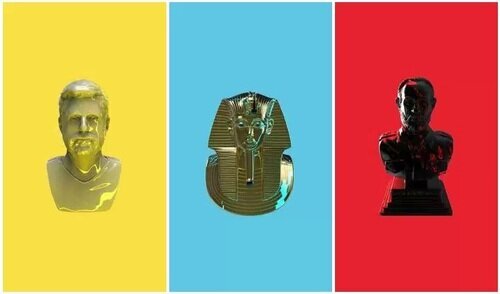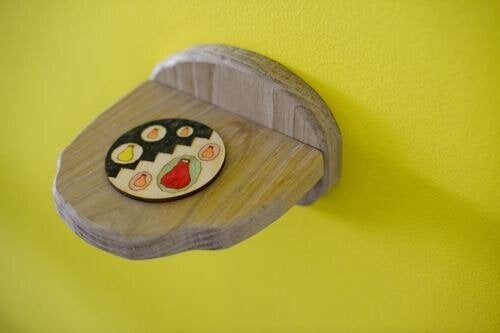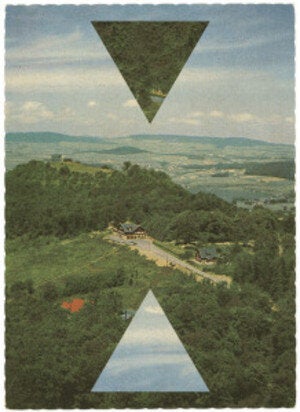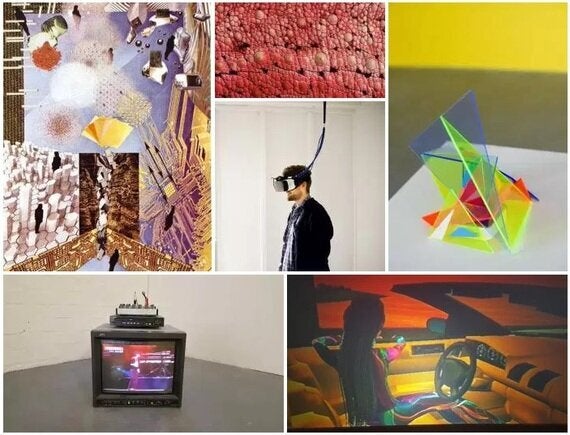A few weeks ago, I was lucky enough to catch 'Short Circuit' on the very last day of the exhibition. Short Circuit is a reassessment of the archetypal touring show - currently based at Styx exhibition and project space in Birmingham, but soon to move onto Copenhagen and Venice. It is put together by independent curator Aly Grimes, and takes the concept of a travelling art exhibition and turns it on its head by asking; "can you have a travelling show - where no art physically travels?"
The show is composed of nine artists or artists' collectives, each based in one of the key cities. In an artist's home city, they will provide their work in its physical or 'original' form, and for each separate location, will transport their art digitally - rethinking and re-envisaging the pieces each time.
Take the Ship of Theseus for example - if a group of sailors set off across the ocean, and replace a rotten plank over the course of the journey - is this still the same ship? To all concerned, it most certainly would be. The ship's owner would take a dim view if the sailors tried to claim (due to the change) that this was in fact an entirely new vessel, and consequently all ownership rights were passed to them. But what about more planks? If gradually, over the course of the journey, the entirety of the ship's make-up was changed and replaced - would we want to say that this is the same boat arriving, as the one that left port? We're in tricky waters now.
Short Circuit leaves the viewer facing the same question - if an artwork has transformed in shape, form, presentation, possibly even in meaning and effect - could we still say that this fits the definition of a touring show, where the location is the primary change, not the artwork itself? If an exhibition has had all of its components replaced, does it remain fundamentally the same? To a large extent, this depends on whether the fundamental aspect (akin to Aristotle's 'form') of the show is maintained. As Short Circuit's raison d'être is to question the form of the archetypal touring show - to raise the interactions, disconnections, and conversations of physicality and virtuality - the ebb and flow between digital and concrete in the modern world, then arguably yes. If this conversation maintains, then surely the exhibition has served its purpose and 'toured' the same question.

The Cool Couple, 'A Kind of Display'
The artists have all been chosen for their keen analysis of these issues. On entering the gallery, you're immediately faced with three massive projections by the 'Cool Couple' - an Italian duo. They consist of three spinning male heads, each adorned with their own individual and rather impressive beard. The piece looks at the cultural and religious significance of the beard over time, and how this has been constantly re-assessed and changed (as the artwork itself will be). Although the work is presented digitally in Birmingham, in another gallery this could take the form of a 3D print sent over the internet, and in another - the sculptures themselves would be displayed. There are even plans to transform the piece into an interactive experience, with a real-life barber shop opened up in Venice. Each iteration of Short Circuit will have a public programme with the local artists, all seeking to further explore the different forms a single artwork can take.

Juneau Projects, 'Mesh Net'
As a digital show, 'Short Circuit' as an epithet refers both to the concept of travel (whether of ideas, conversation, or physical items) - but also as a nod to the frequent technical issues experienced by modern shows. Breakages, stoppages, and problems with equipment are almost to be expected. Although in theory the show would be an unbroken stream of art and ideas - short circuits are inevitable! This disruption is reflected in another of the works on display, the 'Mesh Nets' of Juneau Projects. These Birmingham based artists play with augmented reality and traditional craft-forms, by presenting small 'tokens' around the gallery, which when viewed via smartphone app - transform into a 3D digital model of a vase, a pot, or a bowl. These examples of some of the most ancient artistic crafts are made instantly portable - a digital piece that someone could own, carry with them, and view or show-off at will.

Kensuke Koike, 'Triangles'
As well as issues surrounding change and identity over time, the exhibition also raises the important problem of longevity for digital artwork. When something has no physical form, the ability to re-think, re-use, and alter its meaning, form, and function, is crucial. The work of Kensuke Koike does this very effectively - taking found, vintage photographs - and making the simplest of incisions and changes. These seemingly simple actions completely transform the image, raising infinite new possibilities and combinations. The postcards might take the form of a moving GIF in another exhibition, or even as a collage workshop in another. These alterations affect the outcome and meanings of the artwork each time they are performed, with subtle but incredibly important re-configurings.

Clockwise: Honey Biba Beckerlee, David Stjernholm, Johan Knattrup Jensen, Antonio Roberts, Ryts Monet, and Emily Mulenga.
Although there isn't space to discuss each artists work in detail here (the art of Emily Mulenga, Antonio Roberts, Ryts Monet, Honey Biba Beckerlee, Johan Knattrup Jensen - MAKROPOL, and David Stjernholm all brilliantly add to the overall themes and questions of the exhibition) - together, they form a whole that is more than the sum of its parts. By coming together under the curation of Aly Grimes, working collaboratively and internationally (an especially important factor at this political moment in time) - they show that artistic questioning and conversation can raise new themes in the ever-changing digital world. For anyone in Copenhagen or Venice, it's well worth a trip to see the next iteration of this not-so-traditional travelling show!
Find out more:
For more arts and culture writing - Visit My Blog.